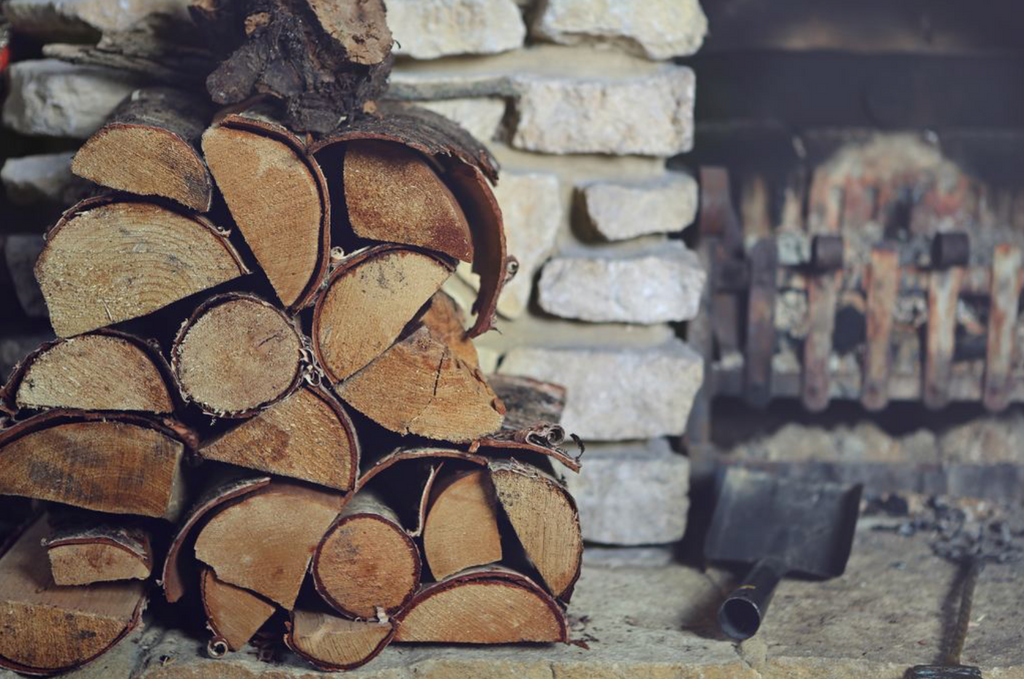Types Of Wood You Shouldn't Burn

So you’ve bought the wood burning stove you’ve always wanted and have set it up in readiness for the chillier nights as autumn approaches. The temptation to raid the shed for some old bits of timber to test it out with is obvious.
Firewood you can buy from a store will always be safe types of wood to burn. But there are some types which shouldn’t be burned at all - either indoors or out. And you should take care with other varieties.
Burning painted, coated or treated wood can release harmful gases. Freshly cut timber can be difficult to light and produces unpleasant smoke. Seawater-soaked driftwood can be toxic. Some trees simply don’t burn very well and there can be all manner of poisons attached to timber which can cause lung irritation.
Avoid Treated Wood
Some types of wood treatment have fallen out of favour because of the chemicals they contain which can be hazardous to human health.
Chromated Copper Arsenic (CCA) was invented in the 1930s and used on wood to make it resistant to rot. Burning CCA-treated wood releases toxic arsenic and chromium into the atmosphere.
It wasn’t until the early 2000s that its use was banned from many industrial and residential applications. Inhaling smoke from scrap timber treated with CCA can have serious health im-plications.
Manufactured Wood Often Contains Harmful Glues
Particleboard, plywood and other kinds of manufactured wood often contain glue. Wood glue often contains formaldehyde, which has been linked to cancer.
Be Wary Of Wet Or Green Wood
Freshly chopped wood contains a lot of moisture. Good firewood should always be seasoned or cured to dry it out. Green wood smoulders with long burning embers and produces a lot of creosote and not much heat. Build ups of creosote in a chimney or flue can become highly flammable and dangerous. Creosote is a condensation of tiny, unburned particles contained in the smoke that coats the inside of a chimney surface as the fire burns. The creosote will stick to the sides of the chim-ney and can ignite, causing a chimney fire.
Ditch The Driftwood
Driftwood from the ocean should never be burned in a stove or log burner. It has been saturated with seawater which contains large amounts of chlorine in the form of chloride. Burn-ing chlorine releases dioxide which is a toxin to humans.
Prevent Any Poison
It makes sense - anything with the word “poison” in it isn’t going to be good for anyone. Poison ivy, poison oak and poison sumac contain urushiol which can produce a rash when han-dled or respiratory problems if it is breathed in.
Hard Wood
Timber from trees like pine, fir, or cypress have "soft" wood. Soft wood burns fast and makes a lot of smoke that can coat your chimney with soot.
Conifers have a sticky, protective substance underneath their bark called resin. This crackles a lot and can result in dangerous sparks flying from the fire.
However, because resin is extremely flammable, woods like pine are a great choice to use as kindling. Seasoned softwood is okay for outdoor fires, but not so good for indoor fires or ones you would want to cook over.
It also makes environmental sense to select wood sourced locally and which isn’t taken from endangered species such as horse chestnut, rowan and mountain ash.
With the right type of firewood, you’ll be able to build a fire that’s safe and healthy for everyone to enjoy from your log burner or wood burning stove.
If you have any questions or would like to enquire further about the products we sell, don’t hesitate to contact us on 01226 816 051 or via email sales@stovesupermarket.co.uk.
- Stovesupermarket Admin








